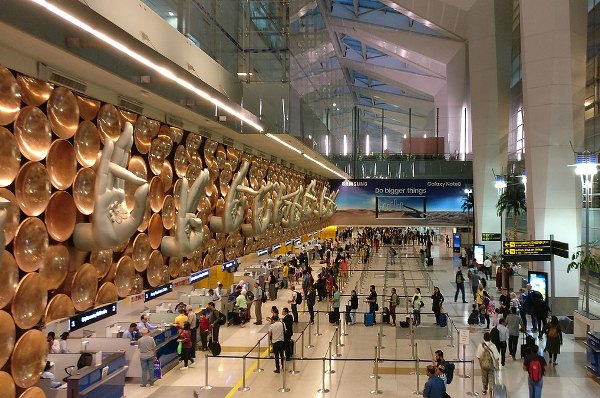 Freight volume growth for airports around the world moderated somewhat in February even as the industry continues to show resilience despite the trade rift between the United States and other major economies, says Airports Council International (ACI) World.
Freight volume growth for airports around the world moderated somewhat in February even as the industry continues to show resilience despite the trade rift between the United States and other major economies, says Airports Council International (ACI) World.
February saw a slight dip in the continued high growth posted by the freight market, reaching +6.3% year-on-year, said ACI.
International freight grew 6.4% during the period, three percentage points lower than its 12-month rolling figure of +9.4%. Domestic freight increased by +5.9% during the month, pushing its rolling 12-months to 4.3%.
North America led the way with +8.2% year-over-year, bringing its 12-month rolling numbers to +7.1%. The U.S.’s air freight market has shown remarkable resilience despite increasing tensions related to trade, said the report.
Europe and Asia-Pacific posted moderate growth in freight volumes in February. The former stood at +6.0% on a year-on-year basis, down from +8.1% in January.
Asia-Pacific’s air freight market grew by 4.7% during the period, down from 8.3% in January. Despite a momentary slowdown, the region’s 12-month rolling figure was +8.2%. “With global macroeconomic outlooks remaining positive for 2018, the region’s air freight market may resist the downward trends caused by trade policy pressures. The Philippines and Indonesia posted high numbers in February, reaching +21.6% and +17.9%, respectively. India and Thailand followed with +9.7% and +8.3%,” said ACI.
India’s freight market, with a 12-month rolling figure of +14.2%, is currently recording significant growth. Although its two major cargo hubs, New Delhi and Mumbai, have been driving a major part of this, smaller airports, such as Bangalore and Chennai, have also provided a substantial contribution, growing by 14.1% and 12.3%, respectively, in February.
Said Angela Gittens, director general, ACI World: “The global freight market showed remarkable resilience in the face of challenges including the prospect of a trade war between the United States and other major economies which threaten to erode the strength of this continued growth.”
Passenger traffic bounces back
Meanwhile, global passenger traffic grew by 6.6% in February year-on-year, in line with the 12-month rolling average of global growth recorded at +6.6%.
“The numbers signalled regained momentum in global passenger growth following a slower January which was negatively affected by the timing of the Lunar New Year,” ACI said.
While the Asia-Pacific region led the world again in the rate of growth, all regions posted solid gains despite some escalating political tensions around the globe, said Gittens.
International passenger traffic, which grew by +7.5%, again drove the global passenger market in February, while domestic traffic also fared well, growing by 6.0% during the period year-on-year.
Asia-Pacific’s total passenger traffic grew the fastest with +8.2% year-on-year, bringing its 12-month rolling growth rate to +7.5%. India and Indonesia continued their double-digit growth, reaching +19.9% and +15.1%, respectively. The two countries’ rolling 12-month figures are currently posting +14.3% and +10.8%, well ahead of their region’s annualized growth.
New Delhi’s Indira Gandhi International Airport benefited from high growth rates for both international (+11.1%) and domestic (+16.6%) passengers during the period. In Indonesia, Jakarta’s Soekarno-Hatta International Airport and Halim Perdanakusuma Airport experienced both robust growth, reaching 11.6% and +25.4%, respectively, year-on-year.
Europe and North America followed Asia-Pacific, gaining 6.6% and 5.5%, respectively, on a year-on-year basis. The numbers were a slight departure from the two regions’ 12-month rolling averages, standing at +8.7% and 3.8% respectively.
Africa and Latin America-Caribbean grew by 9.3% and 6.5%, respectively, year-on-year. Africa’s 12-month rolling figures stood at +8.0% at the end of the period as the region’s economies dealt with volatility while still maintaining an upward recovery trend. In a similar context with regards to volatility, Latin America-Caribbean’s 12-month figures reached +4.9%.
Geopolitical tensions, as well as the blockade in Qatar, continued to depress the Middle East’s passenger figures, despite the region’s freight figures remaining positive. Total passenger traffic in the region declined by 1% in February, falling into negative territory for the second month in a row. The 12-month rolling figure for the region now stands at +3.2%.
Photo: Bharatahs





